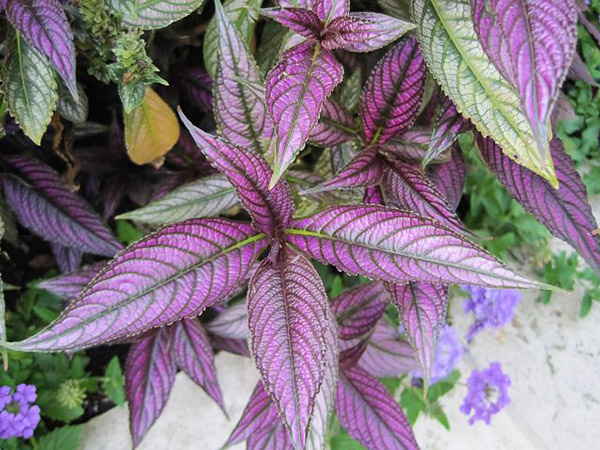

Tips & Techniques
Grow Houseplants Indoors and Outdoors
For those who cherish their time in the garden, the thought of puttering in front of a windowsill brings little comfort. There is a new group of houseplants, however, that can lead double lives — in the winter they're indoor plants, and in summer they become seasonal bedding plants.
They're not new plants, but are used in a new way.
They may be planted directly into the ground alongside other annuals and perennials, or they might be planted in containers or window boxes. The Chicago Botanic Garden's Circle Garden uses houseplants in its three-season rotation of annuals. And many gardening centers, quick to pick up on trends set by prominent garden designers, offer these houseplants in their "Annuals" aisle.
The houseplants listed below are adaptable enough to move from a sunny winter windowsill to an outdoor garden space once danger of frost has passed. All require at least one week of gradual acclimation to outside conditions; they should never be rudely moved from a house to a garden overnight. In the garden you will notice that your houseplants will dry out faster and will be susceptible to windburn, sunburn, and normal garden pests. They will require the same care as any other new plant in your garden.
At summer's end, before you bring them back inside, check for insects or disease. If you suspect a problem, isolate the plant from your other houseplants and monitor closely to identify the problem. Heavily infested plants should be discarded; it's simply not worth bringing an ailing plant inside. At this time, it's also good sense to change the soil and repot the plant using fresh soilless mix. Ordinary garden soil is too heavy and not as fast-draining as the mixes.
Indoor clover (Alternanthera dentata 'Rubignosa')
A woody plant with burgundy foliage (with green undersides) that looks spectacular in the middle of a border. Its dark foliage contrasts with all flowering plants, and it is quite at home amid pinks, lavenders, and purples. It also sports pale greenish-white clover-type flowers along its stems. At the end of the summer, you may either take stem cuttings or dig up the whole plant, cutting it down a bit before you bring it inside for beautiful contrast to all the other green in your window.
Persian shield (Strobilanthes dyeranus)
A striking, iridescent plant with foliage that features purple and silver tones on top and maroon underneath. It will grow several feet tall in the garden and responds well to stem cuttings in late summer. This is a tropical plant that loves heat and humidity, something to remember if it begins to look scraggly in late February! Pinching and pruning will help.
Spider plant (Chlorophytum comosum 'Variegata')
An easy indoors and looks great when planted amidst bright-blooming annuals, where its green-and-white leaves set off all other colors. Its mounding habit makes it perfect for low borders.
Draceana
Contains many recognizable plants from indoor situations, from the ti plant to the red-margined Dracaena marginata. Spear-shaped foliage lends a dramatic vertical accent to a garden. Although these plants prefer part sun indoors, they can tolerate more sun outside if given adequate water. Indoors, dracaena does very nicely with quite cool temperatures.
False palm (Cordyline terminalis)
Quite similar to dracaena and is available in many colorful leaf combinations. The foliage may be streaked with pinks, reds, or yellows, and when plants are massed together, their foliage alone will create an amazing color display.
Indoor weeping fig (Ficus benjamina 'Starlight')
The variegated form of this very popular indoor plant. Again, variegated foliage has many uses in an outdoor garden. The small tree form of this plant needs protection from direct summer sun but makes an excellent container specimen. Polka-dot plant (Hypoestes phyllostachya) is an old favorite well suited to the shade garden, where its pink or white spotted foliage will brighten shady corners. Take cuttings or dig entire plants in fall and pinch back in spring.
Hebe (Hebe andersonii 'Variegata')
A succulent evergreen shrub in its native New Zealand but provides a most unusual combination of puffy, variegated foliage for containers in Chicago. Plant hebe directly into terra cotta containers in the garden and lift the entire plant in fall. Plants may need to be divided at that time. This plant likes cool winter temperatures.
All of these selections are grown for the vivid impact of their foliage, not for their flowers, which are often insignificant or hard to come by with weak winter light. Try growing some of these versatile houseplants this winter, and then see how they revolutionize your annual plantings next summer.


